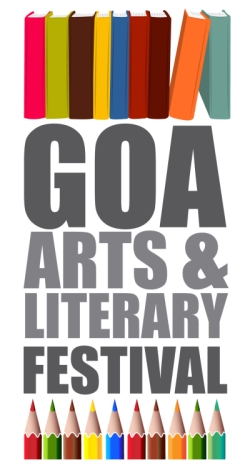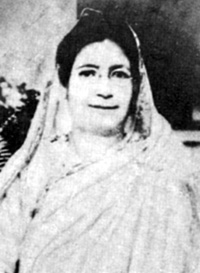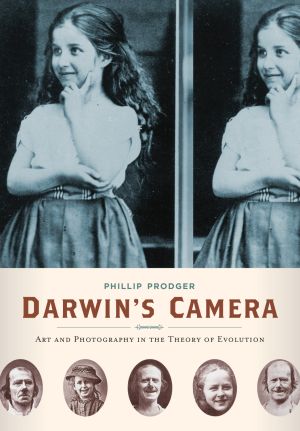|
||
| Continue reading “Presentation of "My Journey as a Witness" in Amsterdam” |
Musings by Shahidul Alam
There are many challenges faced by our world today and even in your local communities. But did you ever imagine that you could help solve these challenges? It?s true, you can! The Microsoft Imagine Cup 2012 Software Design Competition is all about creating real-world applications and solutions that can help make the world a better place. Using Microsoft tools and technology, student competitors can unleash their ideas and technical talent to create cutting-edge software applications. You and your team will develop, test, and build your ideas into applications that can help solve some of the world?s toughest problems, such as poverty, hunger, gender inequality, environmental sustainability, and access to education and healthcare. We know you have the knowledge, the passion, and the drive to make a difference.?Sign up and get started building your solution today!
We know you are excited, but before you start building the next software design solution that benefits people around the globe, take a few minutes to read the?Software Design Rules for Bangladesh and the?Imagine Cup Official Rules and Regulations.
 Expand
ExpandThere are a few different series on Asif Mahmud’s site, but I’m particularly interested in “My City Of Unheard Prayers,” a series of photographs taken at night which seems to boil his work down into its most basic elements. He’s using light and shadow (also the title of?a Moriyama book) in a very primal way. The light in the frame usually doesn’t show us any “thing,” but rather a texture, or an opening, or a reflection. We could say that the photograph showing a man’s face the most clear, in that there is a proper subject to look at. But even in this photo, it’s difficult to focus on his face, instead of the haze which shrouds it. What can the shot of cars on wet cement tell us? It looks like they’re only there to illuminate the scar-like texture of the road, which holds the image together.
Some part of me knows that these photographs don’t represent what Dhaka is “actually like.” ?My City Of Unheard Prayers? presents a highly stylized vision, which is what allows me to imagine that a road could have a scar in the first place. It is possible to say that this gritty, high-contrast black-and-white style has already been done to pieces by Moriyama and others–Asif Mahmud has a?dog photo to match?Moriyama’s most famous shot. This would miss the point, though. The style itself is accessible to anyone with a camera and film. (This does actually exclude a great number of people.) If we think of the style as a kind of language, spoken by Moriyama, D’Agata and others, Asif Mahmud has developed his own vocabulary–or, you know, “found his voice,” if you prefer. It makes the rest of his work, which includes a series about thetobacco trade in Bangladesh, all the more compelling.
[via?Mrs. Deane]
Dan Abbe is a writer and photographer working in Tokyo. He writes a blog about Japanese photography,?Street Level Japan. On Twitter he’s?@d_abbe. Syed Asif Mahmud is a Pathshala alumni
Play in New Window |?Download
Forty years ago this month, the country of Bangladesh declared its independence from Pakistan. Then-President Richard Nixon supported Pakistan during the war because he wanted to prove the US would stand by an ally.
Many Americans disagreed with that stance. And when a ship headed for Pakistan with military equipment and ammunition was set to stop at a US port, one group of Americans felt it was necessary to get involved.
?I was ready to risk my life there,? says 78-year-old Richard Taylor. ?I just wanted to get in front of that ship.? Continue reading “American Activists and the Birth of Bangladesh”
Goa Arts and Literary Festival Dec 17-21

2011-11-25
The 2nd Goa Arts and Literary Festival is meant to coincide with the 50th anniversary of Goa’s liberation after 451 years of colonial rule. It will reflect on the idea of India as reflected through the perspective of cultures, communities and writers of the country. It is hosted by the International Centre Goa from December 17-21.
The festival will touch upon Diaspora, on the Goan and other Indian migrant communities across the world which retain different ideas about what being Indian means; North-East of India and its art, music and literature. The festival will celebrate music, painting and photography, poetry, journalism and publishing, debates, discussions and book-releases: from 17-21 December. Local, national and international delegates will be attending.
Exactly 50 years after the historic days when Indian troops conquered, and annexed Goa. It was another dramatic moment in history for this tiny territory. Each day of the Festival will recall 1961, featuring historians and witnesses to the sensational events as they occurred, as well as lectures, special book releases, and panel discussions about the Goan experience of the Estado da India, quite different from much of the rest of the subcontinent’s experience with the British Raj.
The 2011 Goa Arts and Literary Festival will celebrate creative excellence across India, with a special focus on Goa and its Diaspora. As with the inaugural edition, there will be prominent daily showcases for the best contemporary poetry from across India, and for the extraordinary writers and musicians of the North East.
Events such as this Festival will be held annually so that the quality of the Festival is enriched and enhanced every year by involving more and more people and their ideas and the image of Goa in people?s mind is of a more vibrant cultural and intellectual destination.
Participating Authors:
Aatish Taseer, Abhay Sardesai, Amitav Ghosh, Anand Patwardhan, Anjum Hasan, Aniruddha Sen Gupta, Bhalchandra Nemade,Bilal Tanweer,Charles Correa,Chiki Sarkar, C P Surendran, Cyril Almeida, Deborah Baker, Desmond L Kharmawphlang, Eunice de Souza, Fatima Bhutto, Gulzar, H M Naqvi, Jai Arjun Singh, Jeet Thayil, Jerry Pinto,Jonathan Shainin, Kiran Nagarkar, Kjell Eriksson, Kynpham Sing Nongkynrih, Manohar Shetty, Mamang Dai, Meena Kandasamy, Mitra Phukan, Mohammed Hanif, Mridula Garg,M. T. Vasudevan Nair, Naresh Fernandes, Nirmal Kanti Bhattacharjee, Pablo Bartholomew, Pavan K Varma, Raghunath Mashelkar, Ranjit Hoskote, Robin Ngangom, S. Anand, Sadia Dehlvi, Saeed Akhtar Mirza, Samar Halarnkar, Sidharth Bhatia, Shahidul Alam, Shailaja Bajpai, Shehan Karunatilaka, Sheen Kaaf Nizam, Sivasankari, Sonia Faleiro, Sukrita Paul Kumar, Sunil Khilnani, U.R. Ananthamurthy, Urvashi Butalia,Temsula Ao,Teju Cole, Vishwas Patil, Zac O’Yeah
Participating Artists and Performers:
Dr. Alka Pande, Atul Dodiya, Durgabai Vyam, Gulam Mohd Sheikh, Himanshu Suri, Lou Majaw, Luis Gumby Pinto, Subhash Vyam,Dr. Subodh Kerkar, Suresh Jayaram, Suresh Jayaram, Vijay Iyer
His comments made me stop in my tracks, I began re-thinking why I had proceeded as I had. I’d suffered nagging doubts about Part II after it had been published. May be, the discussion had been too academic, may be it had turned some readers off.
My brother, the one in London, had e-mailed me, saying among other things, ‘[I look for] what can you tell me that reveals a little more about the relationship [she] had with [her] work…[I read, to discover what], as people say, delivers that one ‘a-ha’ moment.
As I began working on Part II, I remembered something which I’d been told long ago by a faculty member at Sussex university just before her seminar began. ‘Oh, 90% of my presentation will be a preamble.’ ‘Preamble? You mean as in the constitution…?’ ‘Yes,’ she chuckled. ‘It’ll be about the purpose of my study, it’s philosophical underpinnings, how I steer and navigate myself through what has been written thus far on the subject…where I situate my own efforts.’
May be I could re-direct Saif’s comments toward myself, I thought, my relationship with this business of re-reading. It would help recap what I’d written in Part II. It would also help readers see where I situate my own efforts.

Re-reading Begum Rokeya for me, has involved taking stock of what has been written about her. Of critically thinking through what sense we have made of her life and struggles, her achievements, what we think she was up against and why. It has meant engaging with some thorny issues in feminist theory. And of course, it has inolved returning to Rokeya Rachanavali (1984), again and again. Continue reading “RE-READING BEGUM ROKEYA ? CONCLUDING PART”
In yesterday’s column, I had written that Bangladeshi scholars, researchers and intellectuals who have sought to understand and appreciate Begum Rokeya (1880-1932) have ignored issues of class and gender. Gender, too? you might well have wondered. Since Rokeya is a woman, how could any author who has written on Rokeya ignore the issue of gender?

Yes, gender as well, and to explain what I mean, I draw on an essay written by Marxist intellectual Farhad Mazhar, which, I hasten to add, is not about Rokeya but about Karl Marx’s theoretical attention to the question of women’s emancipation, ‘Narir Mukti o Shompotti: Itihash Bigyaner Moulik Obosthan Proshonge’, Women’s emancipation and property: The central position of scientific history (Proshongo: Nari Mukti Andolon, edited by Liakat Ali, Dhaka: Pothikrit Prokashoni, 1999).
In an otherwise brilliant essay, a couple of sentences by Mazhar in the opening paragraphs will surely not escape the attention of discerning scholars of women’s history. ‘Needless to say, the amount of work written by Karl Marx on ‘capital’ in no way equals the amount which he wrote on women. Women were not his subject. But does that mean that he lacked any original scientific thoughts on the issue of women? This is the central question that our essay engages with. In other words, our enquiry will be concerned with whether he did or did not have any original ideas on the issue of women, and that, whatever be the reason, these thoughts were not written down.’ (p. 80). Continue reading “RE-READING BEGUM ROKEYA ? PART II”
‘Streejatir Obonoti’ (The downfall of the women-class), Begum Rokeya’s (1880-1932) seminal essay on the condition of women in colonial Bengal was published in the Bangla year 1311, i.e., in the Gregorian calendar year 1904. As such, it is an early piece of her written work, since the literary career of the first Bengali Muslim feminist, whose writings caused moral outrage and led to her villification, spanned thirty years. Her first essay was published in 1901, ‘Pipasha’ (Thirst), while she had presumably been working on her last, ‘Narir Odhikar’ (Women’s rights), the night before she died.
She passed away in the early hours of dawn on December 9, 1932; having worked till 11pm the night before, her incomplete essay lay beneath a paper weight on her writing table, only to be published much later (1957).
For reasons unknown to me, I can only speculate but I choose not to, questions of class and gender have been largely absent in the intellectual efforts of Bangladeshi researchers, scholars and intellectual-activists? –? this includes those who belong to the women’s movement, and also, those belonging to the left school of thought; these schools, of course, are not as mutually exclusive as they sound ? who have sought to understand and appreciate Begum? Rokeya. They have thereby failed to historically locate the particularity of the patriarchal regime against which Rokeya fought, the class-specific nature of Muslim femininity which she challenged.? This, of course, should not be taken to mean that I’m suggesting that Begum Rokeya was only concerned with bettering the opportunities of women of her own class. Far from it.
A brilliant testament to this lies in her short story ‘Sultana’s Dream’ (1905), probably the first utopian fantasy in Indian literature. It was originally written in English, and later translated by Rokeya herself, albeit with slight modifications (see Salimullah Khan, Sroddhanjoli. ‘Begum Rokeya’r utopia,’ Kaler Kheya, Samakal, December 9, 2011). In my discussion below, I have followed the English version (Rokeya Rachanavali, edited by Abdul Kadir Dhaka: Bangla Academy, second edition, 1984 (1973)).
Continue reading “RE-READING BEGUM ROKEYA-I”
![]()

Pathshala South Asian Media Academy is an internationally reputed institute. The Broadcast and Multimedia Department of Pathshala provides short courses to those who are looking for a job in the electronic media or have just started their career in the broadcast industry. At the moment Pathshala is working on a MA programme in Broadcast Journalism that will be offered from September 2012.
For the Broadcast and Multimedia Department, Pathshala is looking for a ?Faculty Moderator/Tutor?
Key responsibilities:
Operate as full time tutor
Coordinate the work of other tutors
Coach students and trainees
Ensure the continuity and quality of classes
Requirements:
MA (preferably in journalism) with at least 5 years experience in Broadcast Journalism
Affinity with teaching and with Pathshala
Communicative
Salary:
Negotiable
Send your CV to:
Shah Sazzad Hossain
Manager (Admin & Finance)
![]()
How Darwin’s Photos of Human Emotions Changed Visual Culture
What disdain and devotion have to do with the dawn of photography, evolution, and Lewis Carroll.

In 1872, some thirteen years after The Origin of Species, Charles Darwin published The Expression of the Emotions in Man and Animals, one of the first scientific texts to use photographic illustrations. Though the work itself was hardly groundbreaking ? it was based on the research of French neurologist Guillaume-Benjamin Duchenne, who ten years prior used electrodes to explore the human face as a map of inner states and published M?canisme de la Physionomie Humaine (The Mechanisms of Human Physiognomy) ? Darwin’s book is regarded not only as his main contribution to psychology, but also as a pivotal turning point in the history of book illustration, right up there with Alice’s Adventures in Wonderland.
(More than a century later, psychologist Paul Ekman used Darwin and Duchenne’s research as the basis for his Facial Actions Coding System, or FACS ? a codified approach to reading human emotion based on facial micro-expressions ? on which I happened to do a decent portion of my undergraduate work and which went on to aid everyone from the CIA to animators. You may also recall the subject from our recent look at the science of smiles.)
Darwin’s contribution to many fields of science, from evolution to geology to botany, are well-known ? but it turns out he was also a seminal figure in the history of visual culture. In Darwin’s Camera: Art and Photography in the Theory of Evolution, photography curator Phillip Prodger tells the remarkable story of Darwin shaped not only the course of science but also forever changed how images are seen and made.
Prodger traces Darwin’s tireless quest to capture human emotion at its most visually expressive ? not an easy task in an age when photography was both slow and painfully awkward. After scouring countless galleries, bookstores, and photographic studios, Darwin finally found the eccentric art photographer Oscar Rejlander, a titan of creative history in his own right, and recruited him to capture the emotional expressions Darwin intended to study.
A page of photographs by Oscar Rejlander from the Darwin Archive, 1871-1872. Albumen prints.
Infants: Suffering and Weeping. Heliotype print.
At first, photographs were judged in exactly the same way as prints and drawings. The same standards that applied to them ? plausibility, authority, skill, and convincingness ? applied equally to photographs. But photographic technology improved rapidly? It took approximately fifty years, but during the latter half of the 1800s photography moved into territory traditional drawing and printmaking could not. Once it became capable of taking pictures faster than what the naked eye could see, it began to affect measures of scientific integrity.” ~ Phillip Prodger
Joy, High Spirits, Love, Tender Feelings, and Devotion. Heliotype print.
Low Spirits, Anxiety, Grief, Dejection, and Despair. Heliotype print..
Indignation and Helplessness. Heliotype print.
But what’s perhaps most interesting is Darwin’s remarkable cross-disciplinary curiosity, a quality I believe is the key to combinatorial creativity. Though he never studied art formally, he had an active interest in art, read art history books, visited art museums, and mingled with the artists on his HMS Beagle voyage. Eventually, the sensibilities of art seeped into his work. Prodger takes a closer look at many of Darwin’s curated friendships ? Lewis Carroll, iconic photographer Julia Margaret Cameron, celebrated animal painters Joseph Wolf and Briton Riviere, sculptor Thomas Woolner, and many more.
Disdain, Contempt, and Disgust. Heliotype print.
Hatred and Anger. Heliotype print.
Surprise and Astonishment, Fear and Horror. Heliotype print.
Photographic illustration was an inexact process. Because there were no present rules for using photographs in books, Darwin attempted to create them. Working at a time when printmaking still dominated scientific illustration, he internalized prevailing notions about authority and authenticity in picture making. In this regard, he was a transitional figure, with one foot firmly in the past ? lessons learned from the books he knew and admired ? and one foot in the future, with the enormous potential he recognized in photography.” ~ Phillip Prodger
Researchers at The Darwin Project, an ambitious initiative to digitize Darwin’s legacy and a fine addition to these 7 important digital humanities projects, are currently crowdsourcing Darwin’s experiment on emotions by asking you to name which core emotion each of Darwin’s images conveyed. The experiment features 11 images and can be completed in under a minute ? give it a try.
Rigorously researched and eloquently narrated, Darwin’s Camera is an essential missing link in the evolution of visual culture at the intersection of history, psychology, and art.